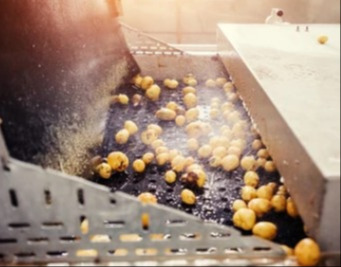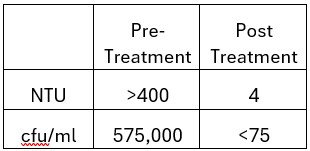Vegetable Wash Water
GEE successfully treated vegetable wash water, significantly reducing the need for fresh water, creating a viable solution with ease of treatment and operation in a small footprint and low operating costs.
The Situation
Water has become a valuable resource due to extensive drought conditions for many food producers in North America. As such any water used in the process of bringing produce to market, it is becoming necessary for reuse of water in a closed loop system. Wash waters contain significant TSS as well as organic loading that drives biological activity. Due to the large quantities of wash water used, a water treatment strategy is required to remove the TSS as well as significantly reduce the bacterial loading to be deemed acceptable for reuse within the process.

The Solution
Ground Effects successfully treated vegetable wash water bringing the NTU down from >400 to 4 and reducing the biological activity to <75 cfu/ml, thereby meeting reuse criteria.


The Results
GEE treated vegetable wash water to reuse criteria.
- Significantly reduces the use of fresh water
- Viable solution for ease of treatment and operation
- Allows variable treatment for all aspects of water quality
- Small footprint
- Low operating costs
